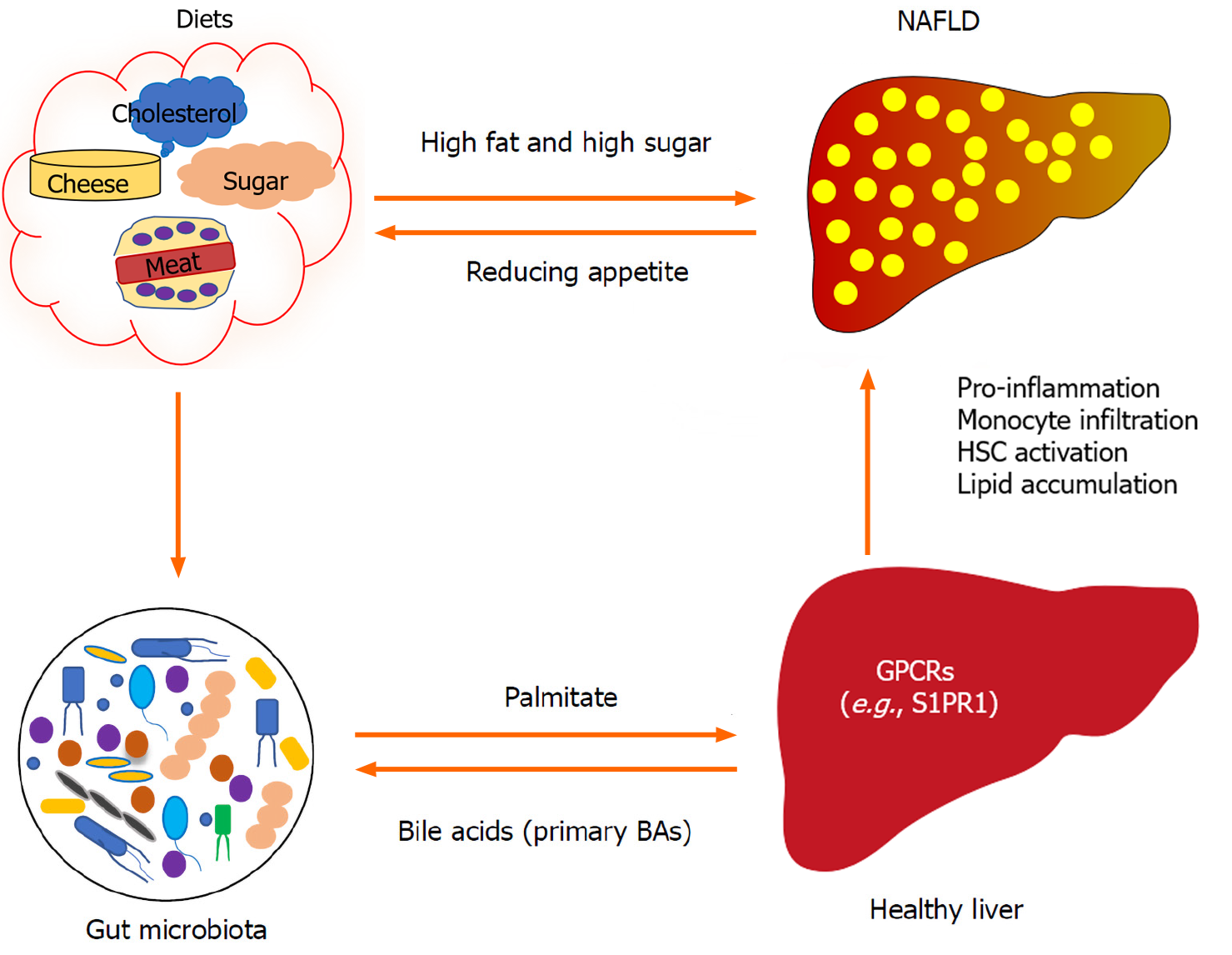Copyright
©The Author(s) 2021.
World J Gastroenterol. Feb 28, 2021; 27(8): 677-691
Published online Feb 28, 2021. doi: 10.3748/wjg.v27.i8.677
Published online Feb 28, 2021. doi: 10.3748/wjg.v27.i8.677
Figure 1 The role of G protein-coupled receptors in liver metabolism and the generation of extracellular matrix proteins.
G protein-coupled receptors are receptors of diverse molecules, such as fatty acids, bile acids, and other agonists (e.g., GW9508). They can regulate hepatic lipid and glucose metabolism and extracellular matrix (ECM) production via directly modulating hepatic cells (hepatocytes and hepatic stellate cells), and indirectly regulating gut hormones (e.g., glucagon-like peptide-1, GLP-1). α-SMA: α-smooth muscle actin; Col-I: Collagen type I; LCFA: Long-chain fatty acid; LXR: Liver X receptor; MAPK: Mitogen-activated protein kinase; MCFA: Medium-chain fatty acid; SREBP1-c: Sterol regulatory element-binding protein 1.
Figure 2 G protein-coupled receptor-mediated interaction of the gut and liver.
Gut microbiota-derived metabolites or molecules (e.g., palmitate) impact liver function by being metabolized to sphingosine 1-phosphate in hepatocytes, which can stimulate the activation of hepatic stellate cells (HSCs) and proinflammation via sphingosine 1-phosphate receptor 1 (S1PR1). In turn, primary bile acids (BAs) are synthesized in the liver, which can also influence the components of gut microbiota. A high fat and high sugar diet can induce nonalcoholic fatty liver disease (NAFLD) and change gut microbiota. Gut microbiota has been shown to impact appetite, and the progression of NAFLD may also impact the appetite. GPCRs: G protein-coupled receptors.
- Citation: Yang M, Zhang CY. G protein-coupled receptors as potential targets for nonalcoholic fatty liver disease treatment. World J Gastroenterol 2021; 27(8): 677-691
- URL: https://www.wjgnet.com/1007-9327/full/v27/i8/677.htm
- DOI: https://dx.doi.org/10.3748/wjg.v27.i8.677










